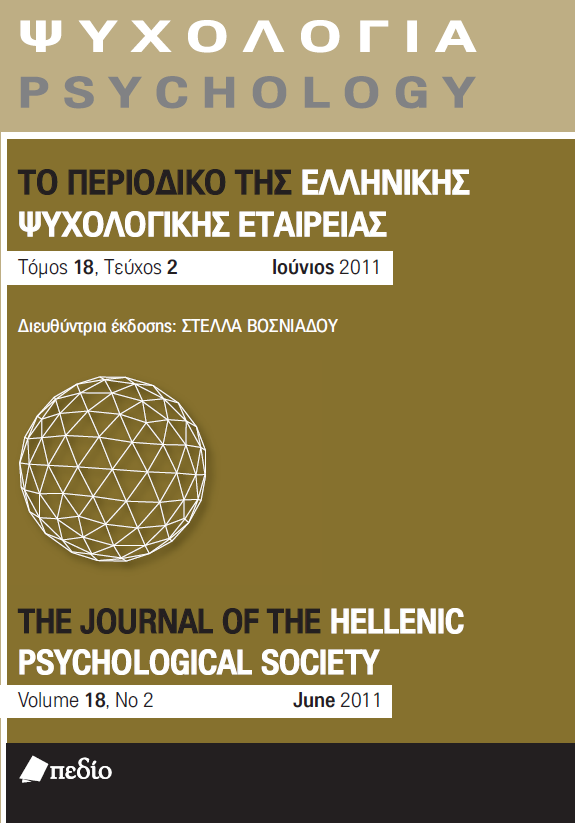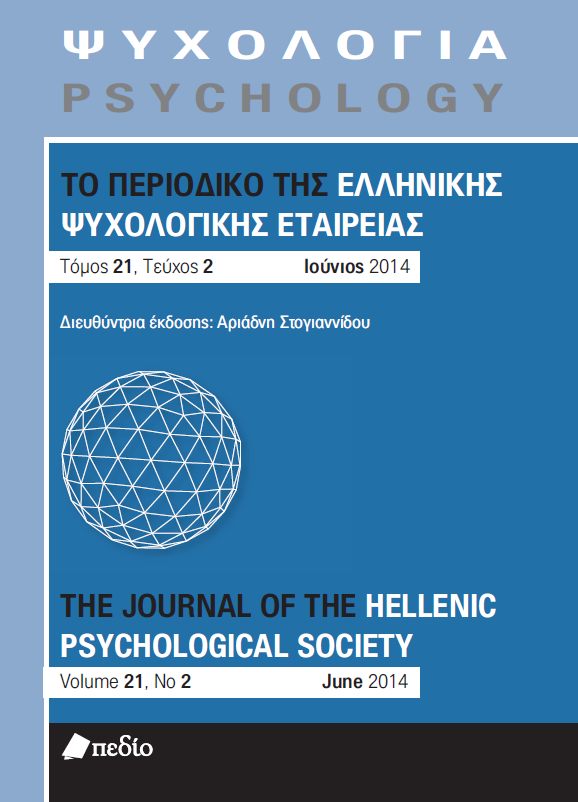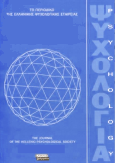Factor Structure and Psychometric Properties of the Penn State Worry Questionnaire (PSWQ) in the Greek Population

Abstract
The aim of this study was the adaptation of the Penn State Worry Questionnaire (PSWQ) in the Greek language. Particularly, we were interested in investigating the factor structure of the scale, using a non-clinical sample (N = 184), aged 16-80 years old. In order to investigate the factorial structure of the measure we used confirmatory factor analysis. We tested three different models: the one-factor model (all items loading on one general worry factor), the two-factor model (two independent factors: Worry Engagement and Absence of Worry), and the three-factor model. The results showed that the three-factor model fitted the Greek data better, confirming the results from previous studies which suggested that PSWQ is a uni-dimensional worry instrument, in spite the fact that method effects appear to be associated with positively and negatively keyed items. Finally, the instrument demonstrated excellent internal consistency and mean inter-item correlations, which provide sound evidence regarding the consistency and homogeneity of the items in measuring the construct of worry.
Article Details
- How to Cite
-
Λιάλιου Δ., Μεσίρης Γ., Ραμαντάνη Α. .-. Α., & Τσαούσης Ι. (2020). Factor Structure and Psychometric Properties of the Penn State Worry Questionnaire (PSWQ) in the Greek Population. Psychology: The Journal of the Hellenic Psychological Society, 18(2), 240–254. https://doi.org/10.12681/psy_hps.23721
- Issue
- Vol. 18 No. 2 (2011)
- Section
- RESEARCH PAPERS

This work is licensed under a Creative Commons Attribution-ShareAlike 4.0 International License.
The journal PSYCHOLOGY adopts a Platinum open-access policy. Submission, processing or publication costs are waived by the Hellenic Psychological Society. Papers published in the journal PSYCHOLOGY are licensed under a 'Creative Commons Attribution-ShareAlike 4.0 International' licence. The authors reserve the copyright of their work and grant the journal the right of its first publication. Third-party licensees are allowed to use the published paper immediately after publication as they wish, provided they retain the defined by the license copyright formalities, regarding the reference to its author(s) and its initial publication in the journal PSYCHOLOGY. Moreover, any adjusted work should be shared under the same reuse rights, so with the same CC license.







